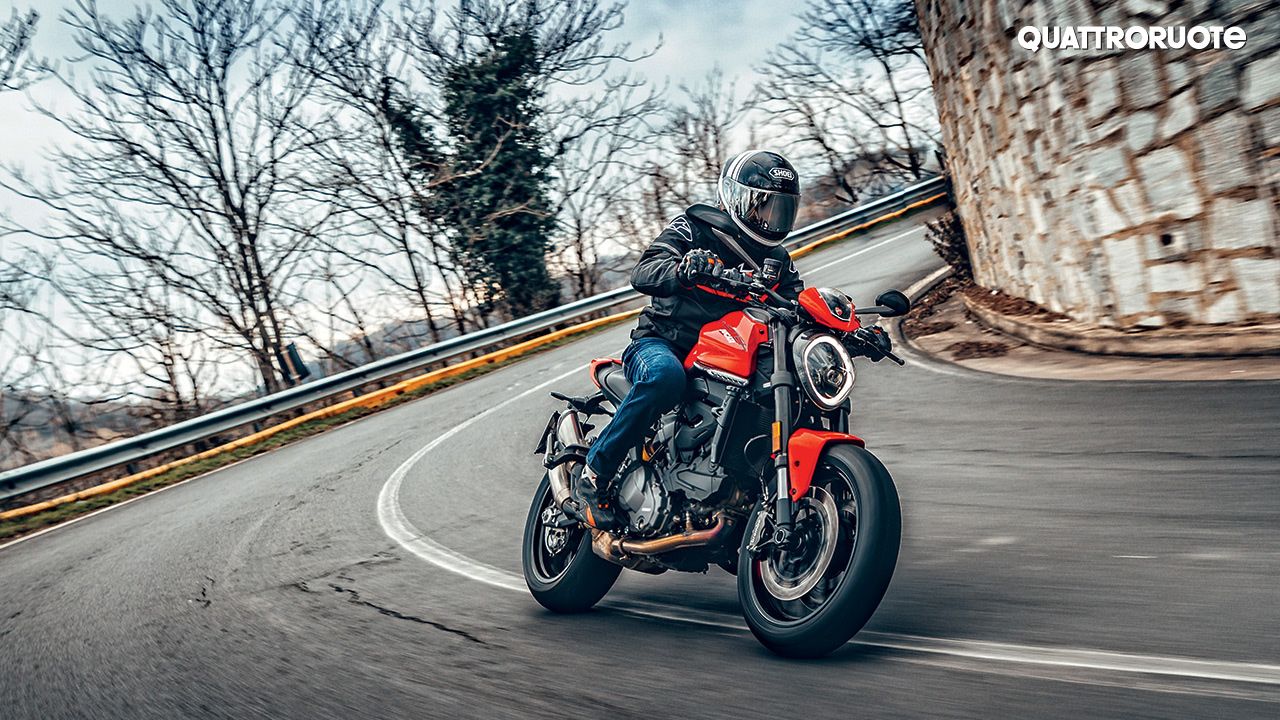
Ducati’s Monster arrives in its fourth generation, packing some radical changes, weighing 20kgs less and loaded with electronics. This is a Monster that leaves the past behind and looks straight to the future.
Names, according to the Romans, are the consequences of things. Perhaps, they were right, for the name ‘Monster’ naturally invokes an image of a naked motorcycle with a visible L-twin engine, a trellis frame, and a tank resting on the top. But that Monster, however, is no more. It might survive in the 1200 though, which today looks like a piece of industrial archaeology.
Until now, the first three generations of the Monster had remained faithful to the original in their proportions and layout and, therefore, were a little ‘retro’. A little too long, big, heavy, and with a slightly aggressive riding position to keep up with today’s naked bikes. But Ducati could no longer accept something like that, and that’s why the new fourth-generation is a Monster in spirit but not in appearance. It’s indeed a radical leap, but for Ducati, it’s also an indispensable one.
The hour of change
Towards the end of the very long life (15 years) of the original Monster, there were already many troubles in replacing it. In the end, the job was done by the 696 – an all-new bike characterized by the very strong rising line of a trellis frame, an air-cooled engine, and a muscular tank. Even the third-generation (2014), while introducing the ‘front frame’ and a new exhaust system, took half a step backwards with its steel tank and classic colours.
So far, in short, the Monster has remained attached to its roots, but what was modern in 1993 is now a thing of the past, to the point that Borgo Panigale’s most youthful bike no longer speaks to the young. They know little or nothing about the original Monster and no longer consider the 821 a real option in the segment.
Innovations & announcements
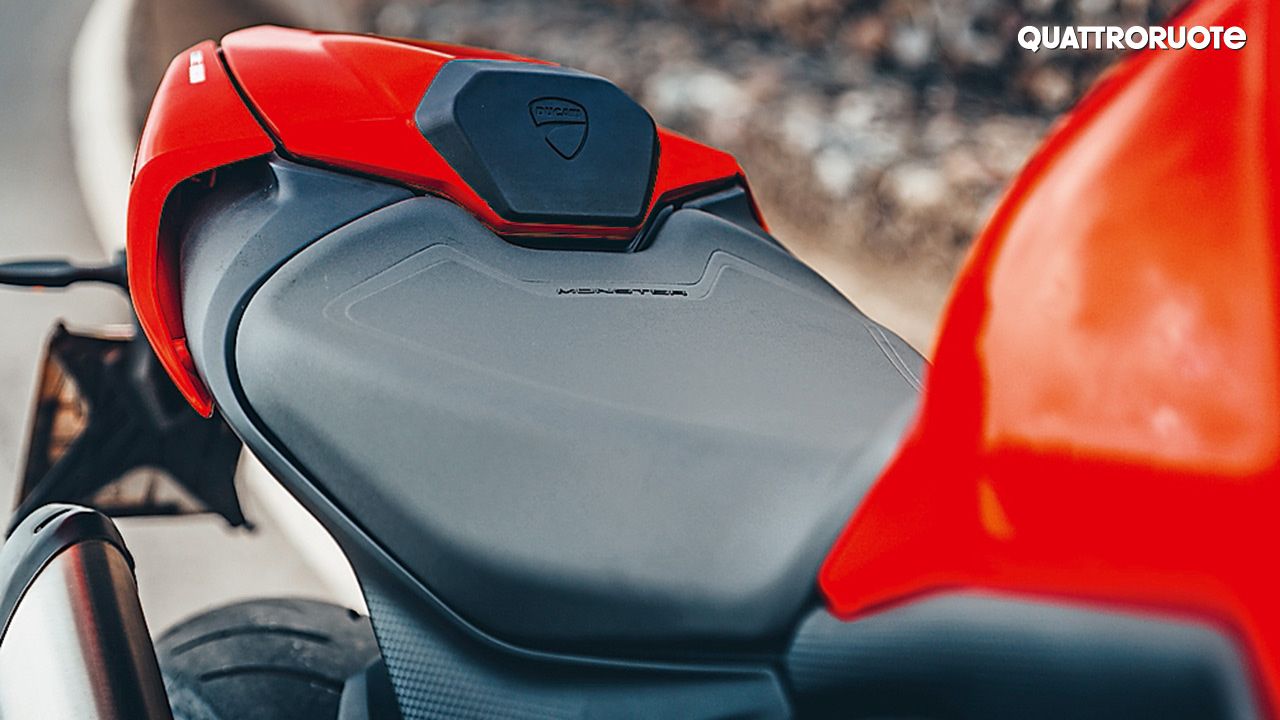




Excuse the long introduction, but the Monster is not just any bike. It’s the bike that changed the market, undermining the reign of sports bikes with fairings, and made naked bikes a thing of vogue. It was, above all, the bike that took Ducati from being a niche brand for those with a penchant for Italian sports bikes to becoming a world phenomenon. So, before we talk about how the new fourth-generation has changed, and how it’s been made, we need to understand the legendary Italian brand’s new design philosophy.
Back to the Basics
To capture the essence of the first M900 (1993), Ducati went back to the original concept – take the sportiest frame of the house, combine it with the most accessible engine, and build a bike that’s as fun as it is effective and efficient. We are talking about 166kgs dry weight and a power output of 109bhp, assisted by state-of-the-art electronics. To put it in context, the new Monster is in the same league as the KTM Duke 890 R, Triumph Street Triple RS, MV Agusta Brutale 800 RR, and now the Aprilia Tuono 660.
1993 Ducati Monster M900
All this essentiality means that the Monster’s technical aspects have always been its aesthetic aspects. And it is in this respect that the new Monster heavily distinguishes itself from the past – even though the front frame and very inclined mono would have made it possible to maintain the characteristic rising line of the Monsters, it was deliberately renounced because it is now considered retro. The result is a side view that resembles the back of a bison and an ultra-compact headlight.
2008 Ducati Monster 696
Since both the frame and the unmistakable L-twin engine are painted black and almost disappear from the view, it’s the tank that carries the responsibility of the bike’s appearance. Equipped with interchangeable 696-style covers, it retains the characteristic vents at the sides but is much narrower at the top, allowing for a 7-degree steering gain on both sides.
2014 Ducati Monster 821
The 820mm seat (you can go down to 800mm or even 775mm) sits into an elusive tail, which may remind you of the M900, as will the low exhaust, even though the two tailpipes are overlapping here. The suspension is KYB, with an upside-down 43mm fork and a cantilever mono. The braking duties are performed by Brembo brakes, with M4.32 callipers at the front. Overall, the new Monster has shed a good 18kg.
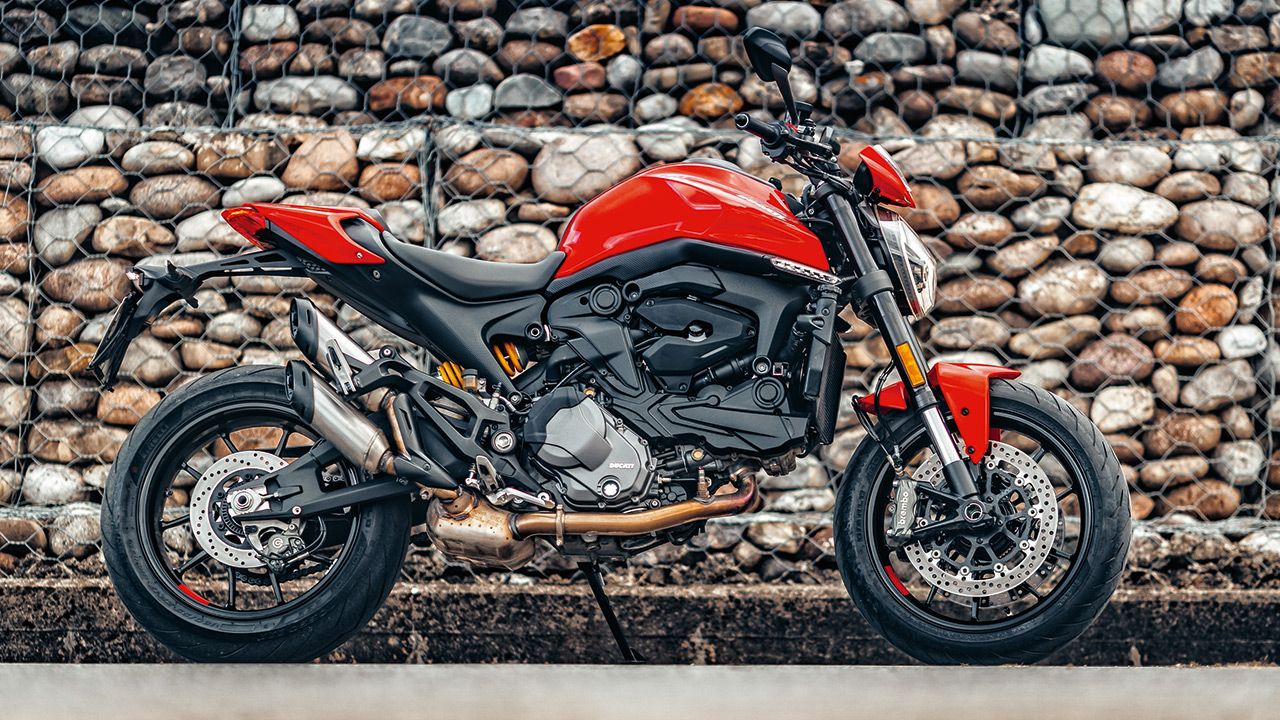
The highly recognisable trellis has been replaced with an aluminium alloy front frame that weighs just 3kg and is coupled with a self-supporting composite frame and a beautiful unloaded swingarm. Another 1.7kg has been shed by the wheels, and 2.4kg by the engine. The Testastretta 11°, in its latest evolution, displaces 937cc and is Euro 5 compliant. It maintains the desmodromic distribution and delivers a maximum power of 109bhp at 9,250 rpm, with 95Nm of torque at 6,500rpm. It’s mated to a new gearbox and a standard DQS quickshifter.
The electronics rely on an inertial platform and some of the most advanced algorithms developed in MotoGP, which were, so far, reserved for the V4. Apart from Riding Modes, it comes with Power Modes for the management of power delivery, ABS, traction control, anti-wheelie cornering, and even launch control. All this can be managed through an intuitive 4.3-inch TFT display, controlled by two selectors on the left handlebar.
Grace meets power
Now, we did get an opportunity to briefly ride a prototype in an advanced stage of development, but not final in details and calibration, on the hills near the factory; and believe me, it’s nice to ride any bike around the hills of Bologna, and when that bike is a Monster. . . well, it becomes the experience of a lifetime.
The first thing you notice about it when lifting it from the stand is the effects of its serious dieting, which also translates into greater compactness than the 821. Its seating position is more modern and less extended to the tank, which, in turn, is lean and slender between the legs. The footpegs have been set lower and further back, and the handlebars are closer together.
In short, it’s not just the looks that have changed. The first Monster had made Ducati ‘mainstream’ without making it lose those characteristics that have always divided fans and detractors: the seating position, rigid setup, and muscular engine. Ducati is now trying to smooth out the edges.
At low speeds, the new Monster moves nimbly, with a rather soft clutch and a precise gearbox, well assisted by a quickshifter. The seat is comfortable and the ergonomics are perfect. Ducati assured us that even the transmission of heat from the engine to the rider has been reduced. In short, the Monster has become more tractable even in traffic.
Exhilarating thrust
We crossed the hill, and a nice winding road opened up in front of us, with a nice layer of asphalt. Now, a Ducati has to be noticed on the road, especially when it’s serious. And this one definitely is – when you turn the throttle decisively, the great-grandson of what we once called the 'pompone' unleashes a tone so deep that it makes your skin crawl, which is accompanied by a truly exhilarating thrust. From 4,000rpm to 7,000rpm, at least, the Monster slings you from one curve to another with sincere vehemence and without ever being cranky.
The 821 was a bike that made you feel its presence so much, but the new Monster seems to almost disappear, leaving room for fun. You don’t have to lean much to get it into a corner – just a slight flick of the handlebars and footpegs, and it goes down into the corner, holding the line well and relying on the usual Ducati braking, which is almost disturbingly effective.
We couldn’t ride it on fast roads – it was a pre-series model, after all. But there is no doubt that we found it to be a very different bike – modern, fast, effective, and very versatile while remaining unmistakably a Ducati. However, we must note that a lot of fans and enthusiasts will take some time to get acclimatised to its radically changed appearance. Given the extent of the change, perhaps it could have been called something else, without displeasing either those who feel nostalgic or the young who care little about history. But if the Monster is to be, then it’ll have to open a new chapter. And the new Monster has all the qualities to do so.
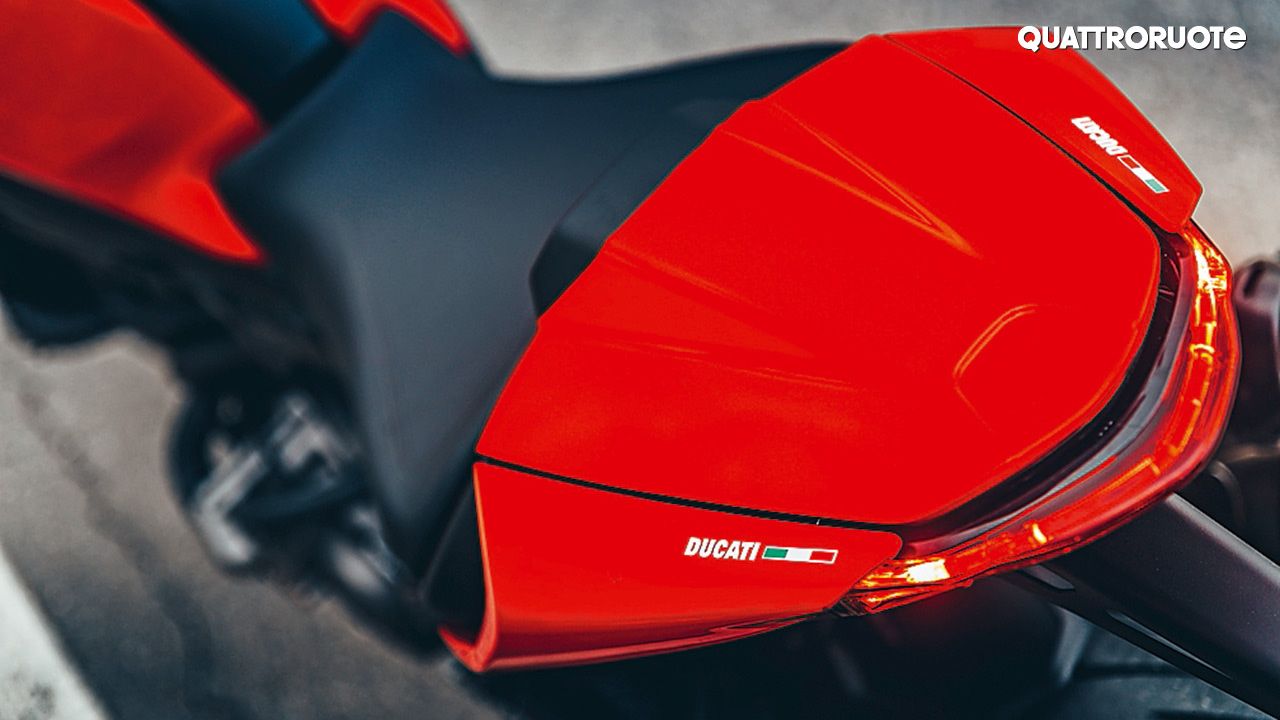
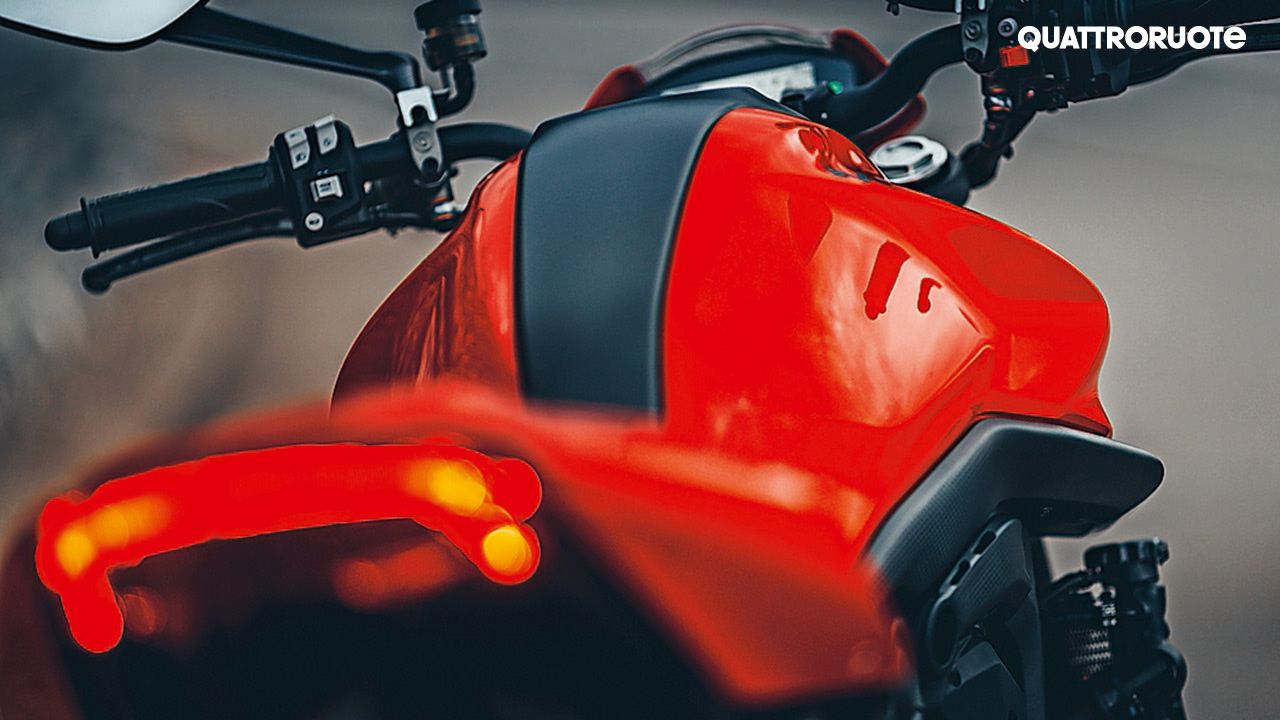
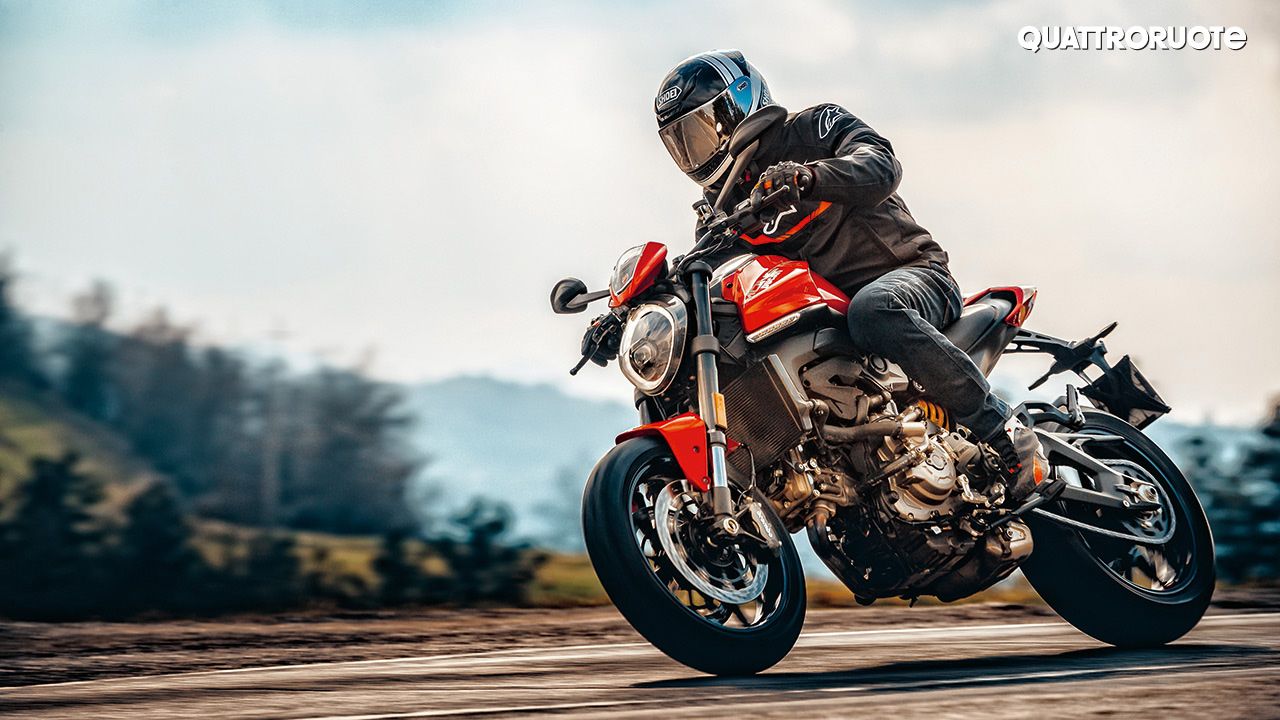
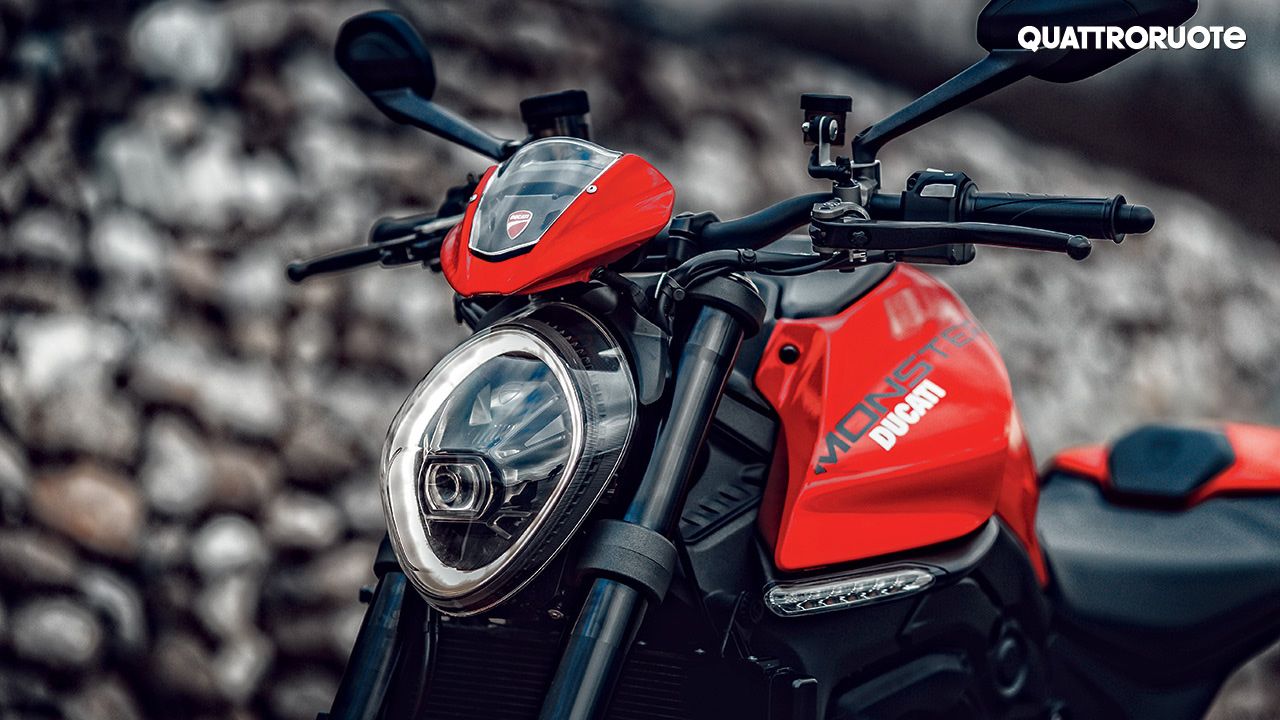
- Technical Specifications
Engine
2 L-shaped cylinders, 937cc
Bore x stroke 94 x 67.5mm
Liquid cooling
Compression ratio 13.3:1
Desmodromic distribution
Belt drive
4 valves per cylinder
Electronic fuel injection
2 x 53mm RbW throttle bodies
Transmission
Chain ending (43 / 15)
Multi-plate clutch in oil bath
Hydraulic assisted control
Slipper system
6-speed gearbox
Bidirectional Quickshifter
Electronic Controls (Managed by the Rider)
3 Engine maps
3 Riding modes
Traction control 8 positions + off
Wheelie control 8 positions + off
Launch control
ABS 3 positions + only front
Chassis
Aluminium front frame
Steering head angle 24°
Trail 93mm
KYB 43mm upside-down fork
Aluminium swingarm
KYB monoshock without linkages
Preload adjustment
130/140mm travel
Brakes
Front 2 x 320mm discs
Brembo M4.32 4-piston radial callipers
Rear 245mm disc
Brembo 2-piston calliper
ABS cornering
Tyres
Front – 120 / 70-ZR17
Rear – 180 / 55-ZR17
Declared Dimensions
Length – n.a.; Width – n.a.
Wheelbase – 1,474mm; Saddle height – 820mm
Kerb Weight – 188kgs
Fuel tank – 14 litres
Declared Performance
110bhp at 9,250rpm
93Nm at 6,500rpm
| Pros • Pros Performance • Equipment | Cons: None |
© Riproduzione riservata
Read more:





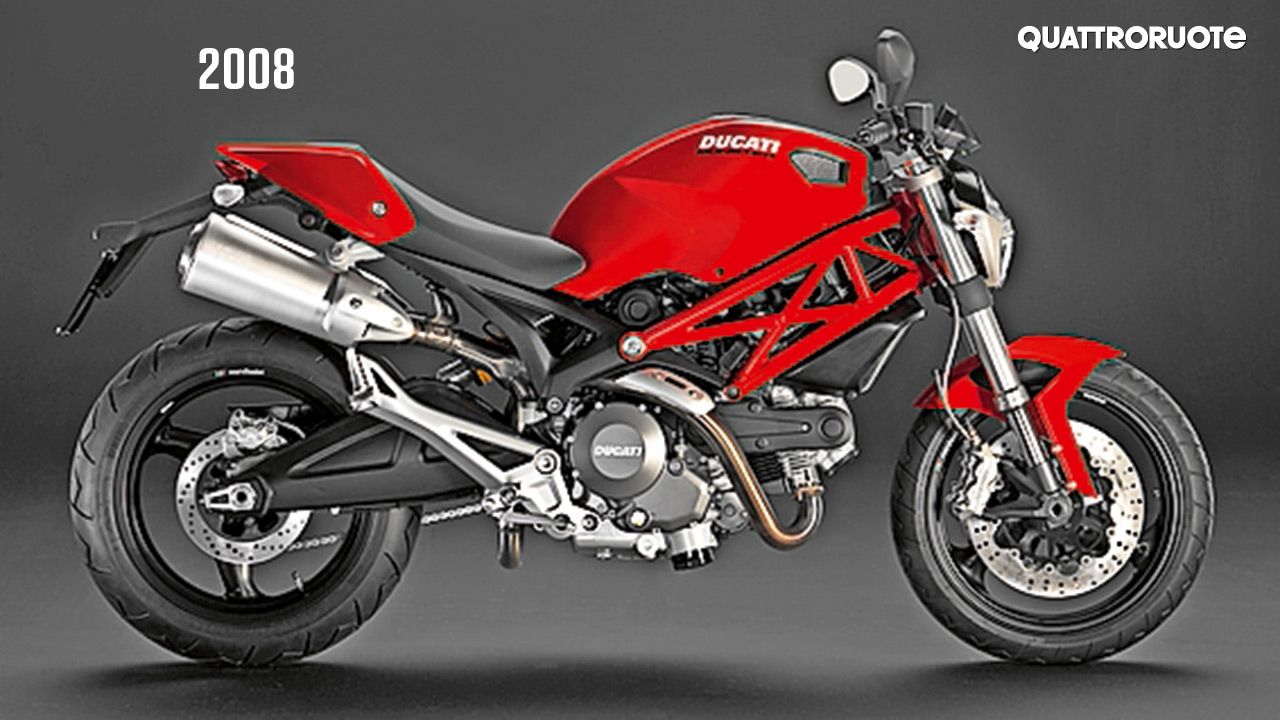
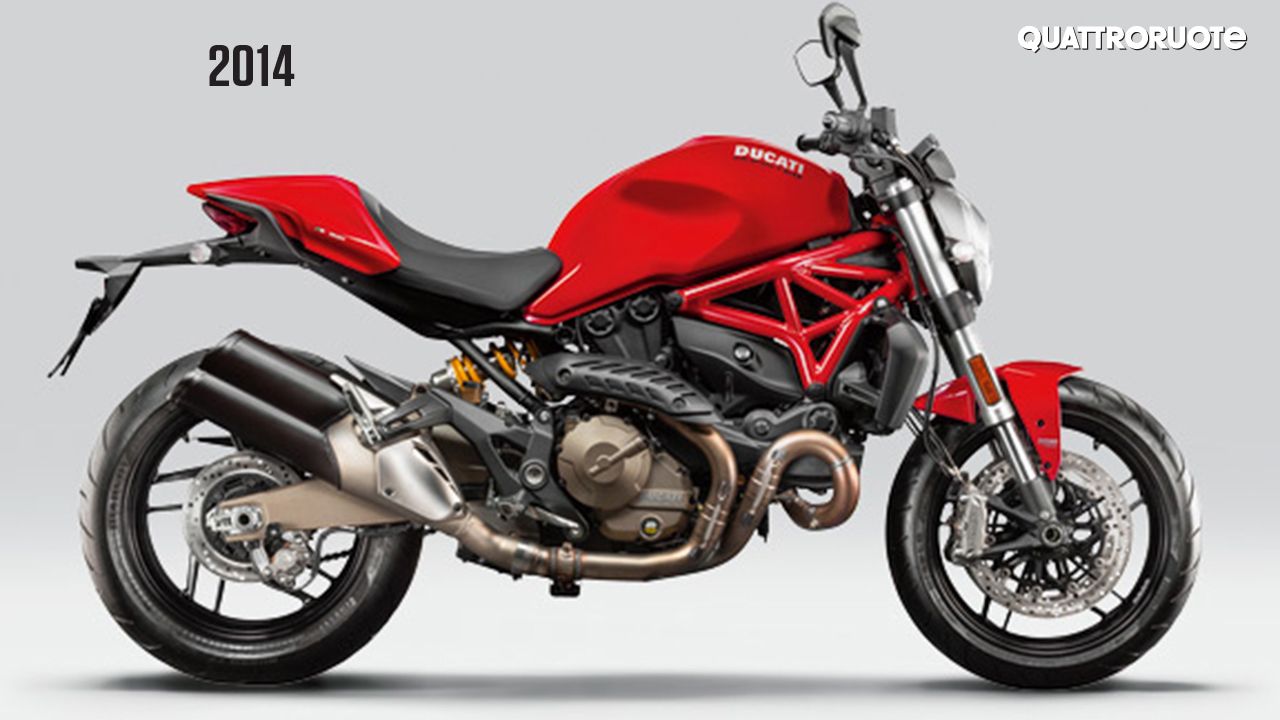




















Write your Comment